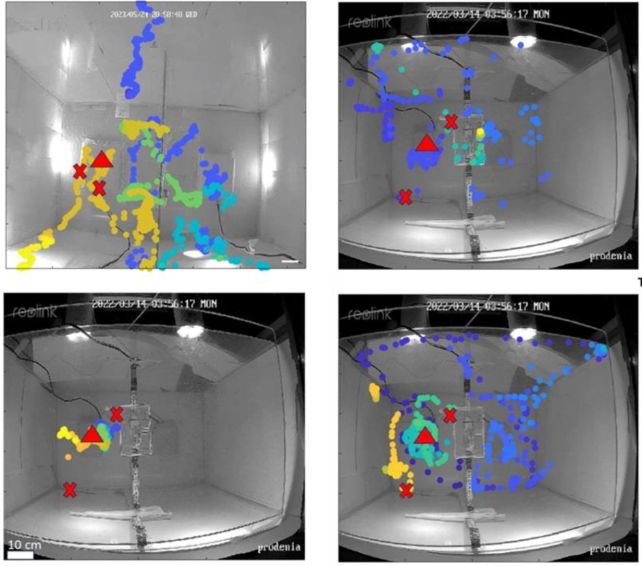 It's a terrible place to raise a family. (Guido Mieth/Moment/Getty Images)
It's a terrible place to raise a family. (Guido Mieth/Moment/Getty Images)
A tomato plant emitting screams of distress outside the range of human hearing makes a terrible place for a moth to deposit its babies.
That's the conclusion that scientists at Tel Aviv University in Israel reached after conducting a careful study to examine the interactions between animals and plants, mediated by the sounds plants make when under duress. It's the first time such an interaction has been observed, confirming that animals can indeed hear and respond to floragenic distress calls.
It follows a previous study conducted by the same team of scientists, in which it was revealed for the first time that plants emit popping or clicking noises in ultrasonic frequencies when dehydrated or cut.
"After proving in the previous study that plants produce sounds, we hypothesized that animals capable of hearing these high-frequency sounds may respond to them and make decisions accordingly," says zoologist Yossi Yovel of Tel Aviv University.
"Specifically, we know that many insects, which have diverse interactions with the plant world, can perceive plant sounds. We wanted to investigate whether such insects actually detect and respond to these sounds."
Related: Plants Really Do 'Scream'. We've Simply Never Heard Them Until Now.

The researchers extrapolated their experimental setups from their previous research, which involved comparing healthy plants to plants that were either dehydrated or had a stem cut.
The new experiment involved healthy plants, dehydrated plants, and recordings of distressed plants. To this mix, the researchers added female Egyptian cotton leafworm (Spodoptera littoralis) moths.
"We chose to focus on female moths, which typically lay their eggs on plants so that the larvae can feed on them once hatched," explains evolutionary biologist Lilach Hadany of Tel Aviv University.
"We assumed the females seek an optimal site to lay their eggs – a healthy plant that can properly nourish the larvae. Thus, when the plant signals that it is dehydrated and under stress would the moths heed the warning and avoid laying eggs on it? To explore this question, we conducted several experiments."
Those experiments were repeated at least nine times to ensure the results were robust.
In the first part, the moths were presented with two boxes – one featured a speaker playing the ultrasounds of a dehydrated tomato plant; the other was kept silent.
Interestingly, the moths demonstrated a clear preference for laying their eggs in the box with the noises. When the moths' hearing organs were neutralized, this preference evaporated. When they couldn't physically hear the noise, the moths chose egg-laying sites in a much more random manner.
 Maps of moth activity in the first stage of the experiment. The red triangle indicates the side on which the plant sounds were played, and the red Xs indicate where eggs were deposited. (Seltzer et al., eLife, 2025)
Maps of moth activity in the first stage of the experiment. The red triangle indicates the side on which the plant sounds were played, and the red Xs indicate where eggs were deposited. (Seltzer et al., eLife, 2025)The scientists took this to mean that the moths inferred the presence of a plant from the noise, compared to the silent box that betrayed no evidence of plant life whatsoever.
The conclusion? A distressed plant is better than no plant.
In the second part, moths were presented with two healthy tomato plants. One of the plants, however, was equipped with a speaker box that played the sounds of a dehydrated plant. Here, the moths preferred to lay their eggs on the silent – and therefore healthy – plant, which would make a better feeding trough for moth larvae than one which is shriveled with dehydration.
For the third experiment, the researchers returned to the boxes. This time, instead of playing plant noises, one box featured a recording of ultrasonic mating calls made by male moths, while the other was silent. In this case, no preference emerged – the female moths just laid their eggs willy-nilly.
This suggested that the moths' preference for egg-laying sites is specific to plant sounds.
Taken together, the results imply moths do indeed hear, respond to, and make decisions based on the sound of a plant in distress. But there could be a whole range of interactions, not just between plants and animals, but plants and other plants, waiting to be uncovered.
"In this study, we sought to determine whether insects also rely on plant acoustic signals when making decisions," the researchers write in their paper.
"We reveal evidence for a first acoustic interaction between moths and plants, but as plants emit various sounds, our findings hint to the existence of more currently unknown insect-plant acoustic interactions."
The reviewed results appear as a preprint in the journal eLife.

.jpg) 3 hours ago
1
3 hours ago
1
 English (US)
English (US)